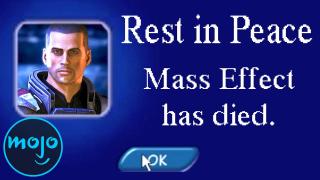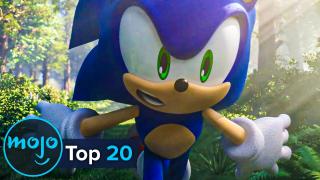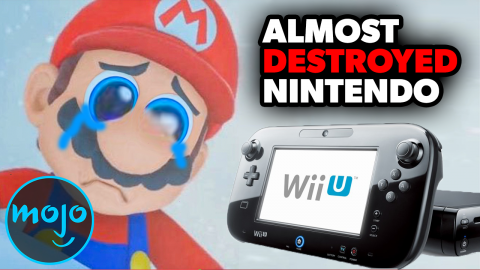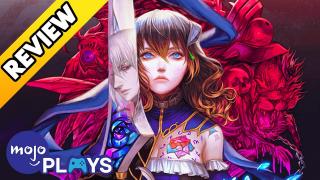Top 10 Small Studios That Destroyed AAA Companies With One Game
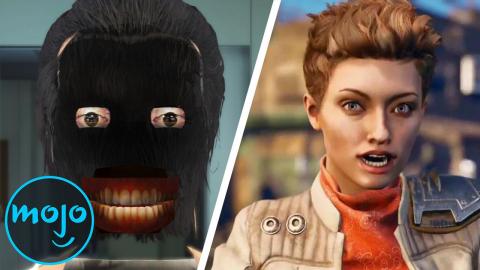
Top 10 Times Smaller Studios Put AAA Studios to Shame
It doesn’t take millions of dollars to recognize a big dream! Welcome to WatchMojo and today we’ll be counting down the top 10 times smaller studios put AAA studios to shame.
For this list, we’ll be going over the instances when video games developed by smaller studios, which were inspired by existing games and franchises, managed to show up the studios that produced the games that catalyzed them. You won’t see Temtem on this list, because “Pokemon” still going strong, despite it’s recent controversy.
#10: “AM2R” (2016)
“Metroid: Samus Returns” (2017)
The “Metroid” franchise has, like its gameplay, been a somewhat stark series, with minimal releases compared to other big Nintendo franchises. This hasn’t stopped fans from wanting more though, and after “Metroid: Zero Mission” remade the first “Metroid” game, fans took it upon themselves to remake the second when Nintendo didn’t - at least for many years. The aptly titled “AM2R” or “Another Metroid 2 Remake” updates the classic GameBoy game using Zero Missions sprites, as well as new areas and enemies, and a whole host of other features. Nintendo released their own remake (finally) the next year, after taking down this fan game, but while its new combat system was interesting, many fans feel that “AM2R,” made by a single programmer, Milton Guasti, outperformed “Samus Returns.”
#9: “War for the Overworld” (2015)
Top 10 Video Game Companies Destroyed by EA
“Dungeon Keeper” (1997-2013)
The “Dungeon Keeper” series is an RTS franchise which flips the script on the standard “hero searches dungeons for loot” narrative by having the player play as the monsters managing a dungeon in order to kill said hero. Unfortunately, EA’s treatment of the series has been disappointing to say the least, especially after the controversial freemium mobile version. Enter Brightrock Games, who’s title; “War for the Overworld!” was initially created to be a fan-made sequel to the series, but eventually became a standalone release with explicit references to “Dungeon Keeper” removed. Despite this lack of connection to the original franchise, “War for the Overworld” certainly bears a strong resemblance to the games that inspired it and doesn’t charge you an arm and a leg!
#8: “Divinity: Original Sin” (2014)
“Dragon Age: Inquisition” (2014)
“Dragon Age: Inquisition” by Bioware was released to critical and financial success, but it also received a fair amount of criticism for the ways in which combat and story diverted from the norms in prior “Dragon Age” games; some franchise fans felt that Inquisition was a downgrade on both fronts. Meanwhile, “Divinity: Original Sin,” a partially crowdfunded game released the same year, developed by Larian Studios, has been cited as bearing more of a resemblance to “Dragon Age” than “Inquisition” does. It’s arguably more challenging, boasts better combat and more freedom in terms of how to play, and came packaged with a slick editor. To ultimately seal this shame; Larian Studios is now developing “Baldur’s Gate 3”, a series whose first two titles were developed by Bioware, and was the inspiration for “Dragon Age” to begin with.
#7: “Sonic Mania” (2017)
Top 20 Sonic Games
Sonic Games by “Sonic Team”
The “Sonic the Hedgehog” franchise has been dragged through the mud for years in the court of public opinion, mainly because “Sonic Teams” work for the last few decades have ranged from decent to legendarily bad. Then longtime Sonic superfan Christian Whitehead and his studio “Headcannon” released Sonic Mania! Taking things back to basics with Genesis-era 2D gameplay, while also bringing in new levels and mechanics that made fans love “Sonic” in the first place. Sure, it was published by “Sega,” but aside from “Sonic Boom” it was also the first major Sonic release not to be released by “Sonic Team”. Sometimes the old guard isn’t always the best hands for classic franchises.
#6: “A Hat in Time” (2017)
Top 10 Times Video Game Companies ALMOST Went Bankrupt
“Banjo-Kazooie” (1998-2008)
3D collectathon platformers like “Banjo-Kazooie” dominated the late ‘90s and early 2000s, but fell by the wayside, mostly because Microsoft didn’t develop any new 3D platformers once they bought Rare, under the pretense that “no one wanted 3D platformers anymore”. While “Yooka-Laylee” by former Rare alumni studio “Playtonic Games” was a great attempt at a spiritual sequel, we would argue that “A Hat in Time” managed to do it better and on 1/6th of the budget! Developer “Gears for Breakfast” recaptured the magic of 3D platformers of the era, with tons of collectibles, costumes and abilities, and an incredibly charming atmosphere. It’s not as revolutionary as some of the recent AAA 3D platformers, but it’s still a wonderful throwback that certainly helped prove Microsoft wrong!
#5: “Undertale” (2015)
“Earthbound”/”Mother” series (1989-2015)
“Earthbound,” also known as the “Mother” series in Japan, has had a troubled history outside of its native country, mostly due to Nintendo refusing to market the quirky RPG series or import 2 of its 3 games for many years. However, “Undertale,” a Kickstarted Indie game which takes many cues from “Mother,” particularly with its music and offbeat characters, has proven to be a global phenomenon, and it was all done by one guy: Toby Fox. “Undertale”’s morality and battle systems, as well as its engaging and replayable narrative have made it an enduring hit and one of greatest indie game successes in recent memory. See what happens when you don’t give us Mother 3 Nintendo?
#4: “Cities: Skylines” (2015)
Top 10 Cities We Would Love to See Parodied in Grand Theft Auto
“SimCity” (2013)
Fans of city simulator series “SimCity” were massively disappointed by EA Maxis’s 2013 release, which had a notoriously disastrous launch due to overloaded servers caused by the game forcing players to play online. The number of downgrades compared to previous games, like the city size limit, didn’t help either. But two years later, Finnish developer Colossal Order released “Cities: Skylines,” which, although an unrelated franchise, managed to feel more like the modern “SimCity” game players had been waiting for, thanks to its massive city sizes and support for user created content. At the time of its release, it rightfully took SimCity’s old crown as the premiere city building game.
#3: “The Outer Worlds” (2019)
Top 10 Game Companies That Don't Exist Anymore
“Fallout” Franchise (1997-)
The “Fallout” franchise is known for its expansive action RPG worlds and quirky aesthetics, at least once Bethesda took over. However, many feel that Obsidian Entertainment managed to beat Bethesda at their own game, almost literally, with “Fallout: New Vegas,” and it looks like the same holds true for their original title, “The Outer Worlds,” given that “Fallout”’s original creators directed it. Set in a retro-futuristic space colony, full of biting commentary on capitalism, “The Outer Worlds” ups the ante from “Fallout” games with features like multiple planets, branching narratives, and more streamlined character creation.
#2: “Bloodstained” Games (2018-)
Bloodstained: Ritual Of The Night Review - MojoPlays
“Castlevania” Franchise (1986-)
“Castlevania” is one of gaming’s most beloved and longrunning franchises…it’s just too bad that publisher Konami seems determined to ignore the series (and many of their other IPs!). Since the departure of producer Koji Igarashi, Konami has only made a handful of new “Castlevania” games, and not particularly well-received ones! Thankfully, Igarashi has returned with a few new games inspired by classic “Castlevania”. “Bloodstained: Curse of the Moon” takes its cues from the NES era of the series, specifically “Castlevania III: Dracula's Curse”. Meanwhile, “Bloodstained: Ritual of the Night” is more in line with “Castlevania: Symphony of the Night.” And any game with flying pigs in it is a winner in our book.
#1: “Stardew Valley” (2016)
“Harvest Moon”/”Story of Seasons” Franchise (1996-)
For 20 years, the biggest name in farming/life simulator video games was “Harvest Moon”…or “Story of Seasons” after the developer and publisher split ties. But as the series went on, the series deviated further and further from its original charm. Thankfully, “Stardew Valley,” an Indie game developed by a single individual, Eric Barone, managed to re-sow what we’d thought was a fallow field. “Stardew Valley” streamlines the farming process, gives the player more romance options (including same-sex love interests) and let’s you dungeon crawl, among a wide variety of other activities - all delivered in a charming, SNES style. The game practically made the series that inspired it obsolete!


